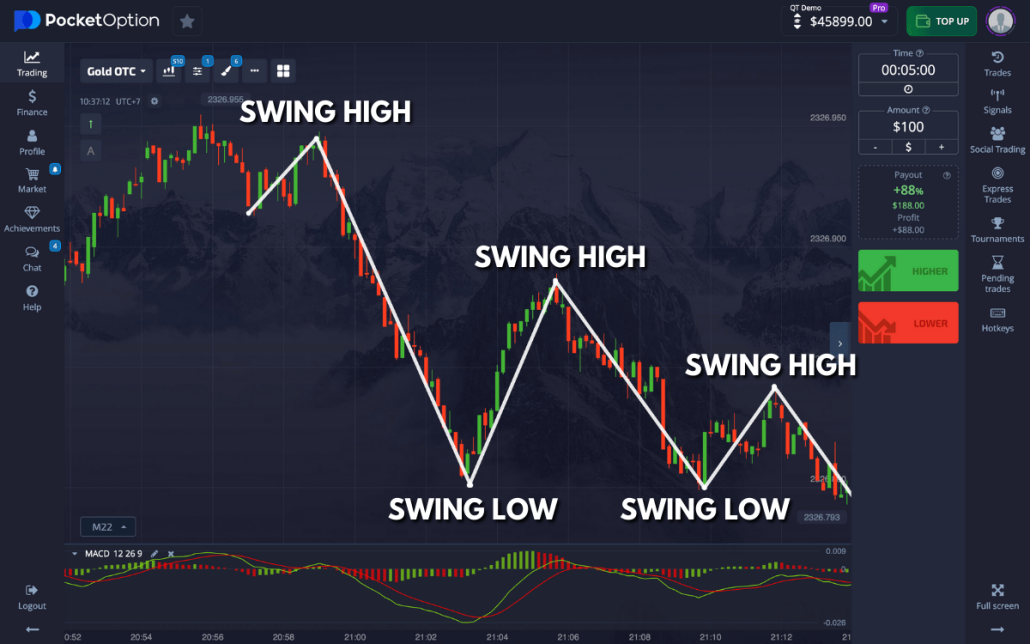Mastering the Game A Comprehensive Guide to Strategy Pocket Option

Mastering the Game: A Comprehensive Guide to Strategy Pocket Option
When it comes to trading platforms, Pocket Option stands out as a dynamic environment for both novice and experienced traders. With its user-friendly interface, a multitude of assets, and various trading options, it provides the ideal opportunity to engage in the financial markets. For those looking to optimize their trading results, understanding effective strategies is crucial. In this article, we will dive deep into crafting a strategy for Pocket Option, focusing on techniques that can elevate your trading experience. Additionally, you can refer to strategy pocket option https://pocketoption-web.com/komissii/ for insights on commissions related to trading on this platform.
Understanding Pocket Option
Pocket Option is a trading platform that empowers users to trade various financial instruments, including currency pairs, commodities, cryptocurrencies, and more. With its cutting-edge technology and seamless execution, traders are drawn to the platform’s flexibility and accessibility. However, to make the most of the features Pocket Option offers, one needs a solid strategy that encompasses key trading principles.
Key Aspects of a Successful Trading Strategy
Crafting a successful trading strategy involves several critical components. Let’s explore these aspects in detail:
1. Market Analysis
Understanding market analysis is fundamental. Traders can utilize both technical and fundamental analysis to make informed decisions. Technical analysis involves studying price charts and patterns, while fundamental analysis looks at the broader economic factors influencing asset prices.
2. Risk Management
Risk management is an integral part of any trading strategy. One way to mitigate risk is by setting stop-loss orders. This practice prevents significant losses by automatically closing a position once it reaches a certain loss threshold. Additionally, diversifying your portfolio can help to spread risk across different assets, reducing exposure to any single instrument.

3. Trading Plan
Developing a well-defined trading plan is crucial. This plan should outline your goals, risk tolerance, and specific entry and exit strategies. A trading plan not only keeps you disciplined but also helps you navigate emotional fluctuations that often accompany trading.
4. Use of Indicators
Pocket Option provides various trading indicators that can aid in market analysis. Popular indicators include Moving Averages, Bollinger Bands, and MACD (Moving Average Convergence Divergence). Understanding how to use these tools can help you identify trends and entry points more effectively.
Strategies for Pocket Option
Let’s delve into some popular strategies specifically designed for trading on Pocket Option:
1. Trend Following Strategy
This strategy involves identifying an existing trend in the market and trading in the same direction. Once a trader recognizes that an asset is either in an upward or downward trend, they can place trades that align with this movement. Using indicators like Moving Averages can assist in identifying trends.
2. Scalping
Scalping is a short-term trading strategy focusing on making small, quick profits. Traders employing this method often execute numerous trades within a day, relying on rapid price movements. While this strategy can be profitable, it requires a strong understanding of market dynamics and quick decision-making skills.
3. Reversal Trading
Reversal trading seeks to identify points where the existing trend is likely to change direction. This strategy involves a higher level of risk but can lead to significant returns if executed correctly. Traders often look for key support and resistance levels and use indicators to confirm potential reversals.

4. News-Based Trading
News-based trading capitalizes on the volatility generated by significant news events. For example, economic reports or geopolitical developments can cause sudden price movements in the market. Traders who monitor news events closely can use this information to make strategic trades aligned with market sentiment.
Psychological Aspects of Trading
Besides technical and strategic elements, the psychological aspects of trading cannot be overlooked. Trading can be emotionally taxing, and human psychology often influences decision-making. Strategies to manage emotional responses include:
1. Discipline
Adhering to your trading plan and defined strategies is critical to achieving success in trading. Discipline helps to prevent impulsive trades based on market emotions.
2. Patience
Successful trading requires a great deal of patience. Waiting for the right trade setups and not rushing into trades can help improve your overall outcome.
3. Avoiding Overtrading
Overtrading is a common pitfall for many traders. Establishing clear guidelines for the number of trades you will engage in each session can help mitigate this risk.
Conclusion
In conclusion, developing a robust strategy for Pocket Option encompasses understanding market analysis, effective risk management, and embracing the psychological aspects of trading. Whether employing a trend-following approach, or focusing on scalping, the key is to find a strategy that aligns with your trading style and risk tolerance. With the right knowledge and careful planning, traders can navigate the Pocket Option platform successfully, enhancing their chances for profitable outcomes.
